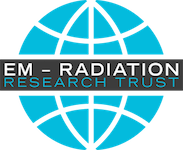Abstract
Radiofrequency (RF) and microwave (MW) radiation have been used in the modern world for many years. The rapidly increasing use of cellular phones in recent years has seen increased interest in relation to the possible health effects of exposure to RF/MW radiation. In 2011 a group of international experts organized by the IARC (International Agency for Research on Cancer in Lyon) concluded that RF/MW radiations should be listed as a possible carcinogen (group 2B) for humans. The incomplete knowledge of RF/MW-related cancer risks has initiated searches for biological indicators sensitive enough to measure the “weak biological influence” of RF/MWs. One of the main candidates is the immune system, which is able to react in a measurable way to discrete environmental stimuli.
In this review, the impacts of weak RF/MW fields, including cell phone radiation, on various immune functions, both in vitro and in vivo, are discussed. The bulk of available evidence clearly indicates that various shifts in the number and/or activity of immunocompetent cells are possible, however the results are inconsistent. For example, a number of lymphocyte functions have been found to be enhanced and weakened within single experiments based on exposure to similar intensities of MW radiation.
Certain premises exist which indicate that, in general, short-term exposure to weak MW radiation may temporarily stimulate certain humoral or cellular immune functions, while prolonged irradiation inhibits the same functions.
http://www.ncbi.nlm.nih.gov/pubmed/23562692
http://www.sciencedirect.com/science/article/pii/S0048969713003276

